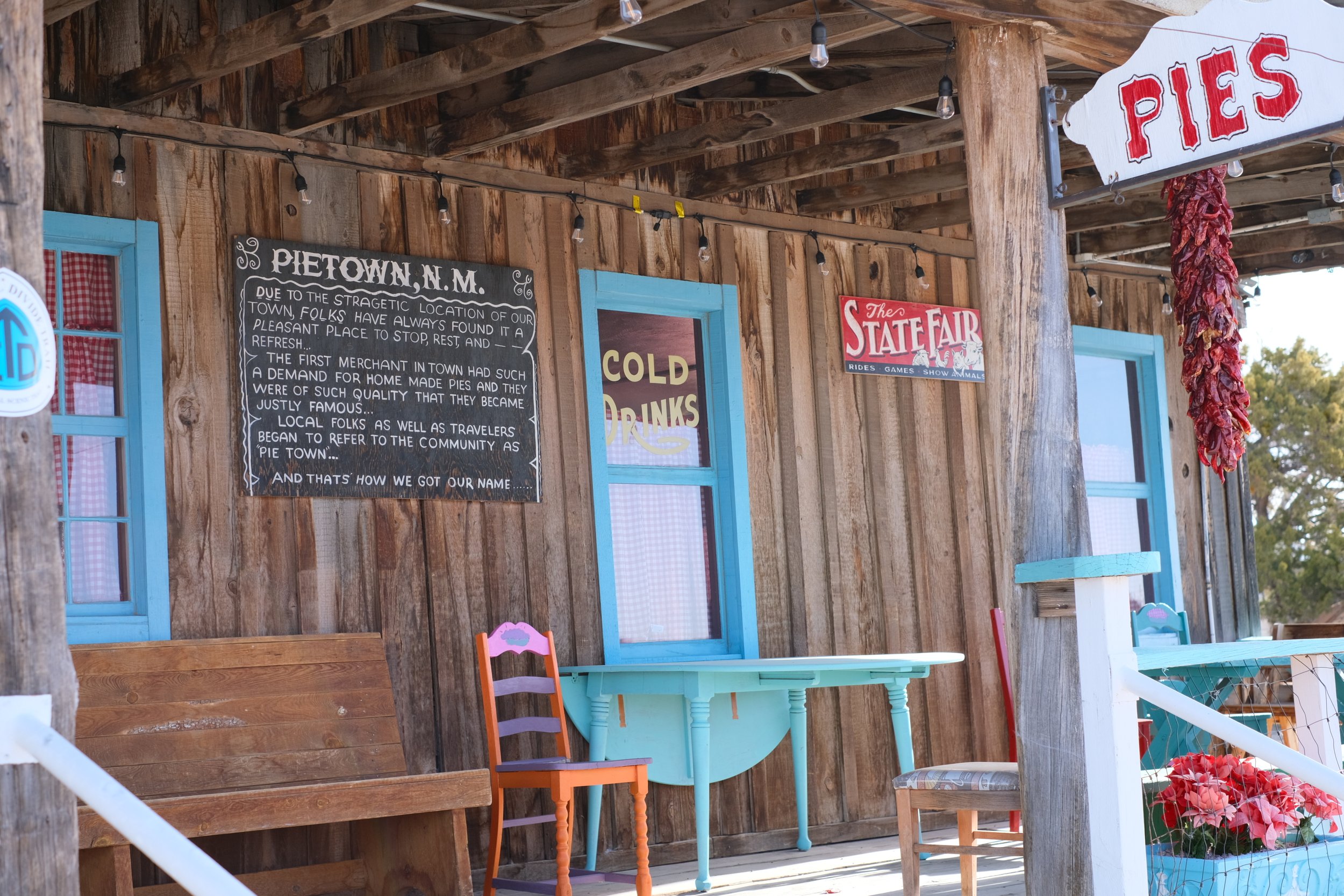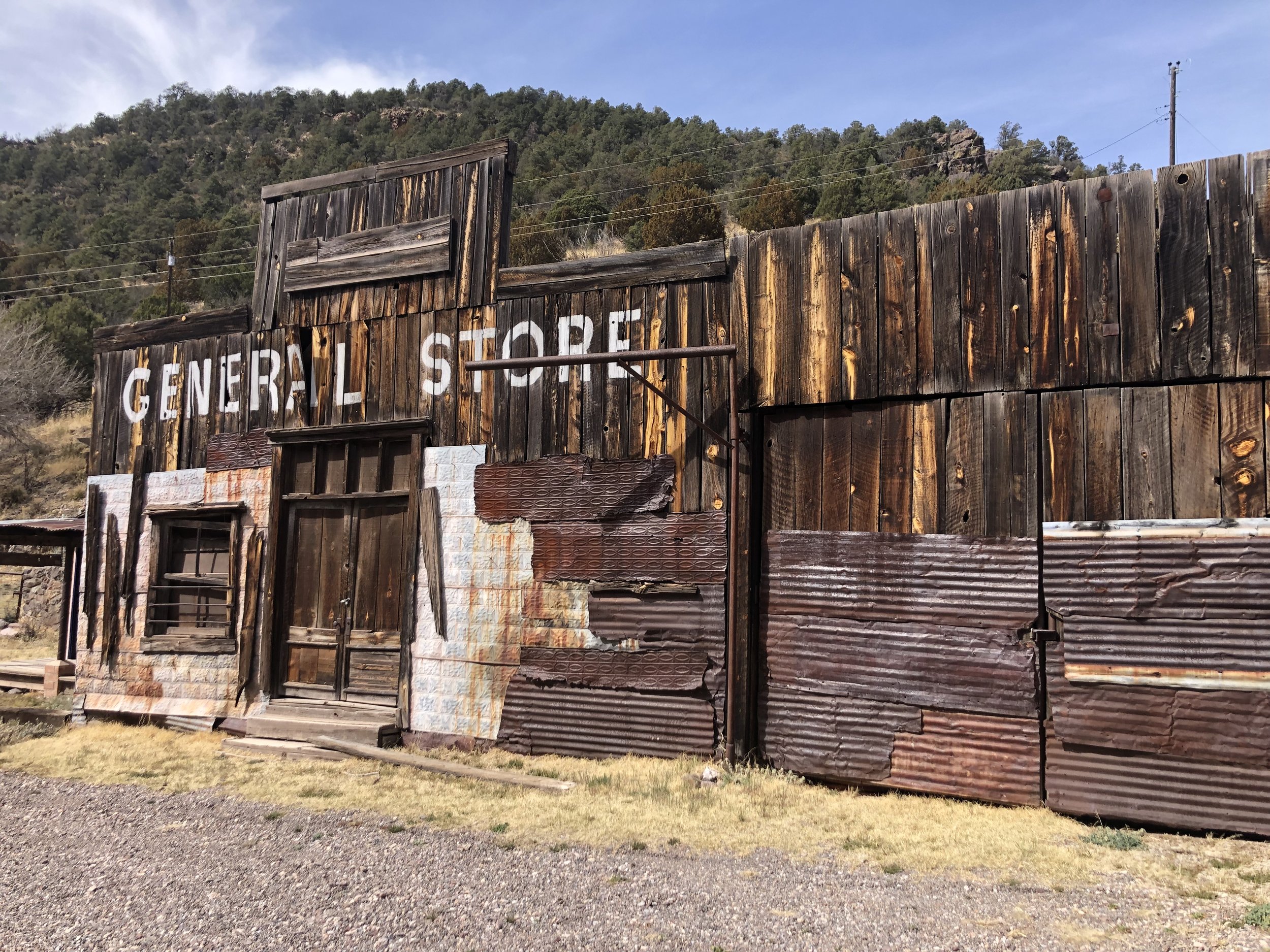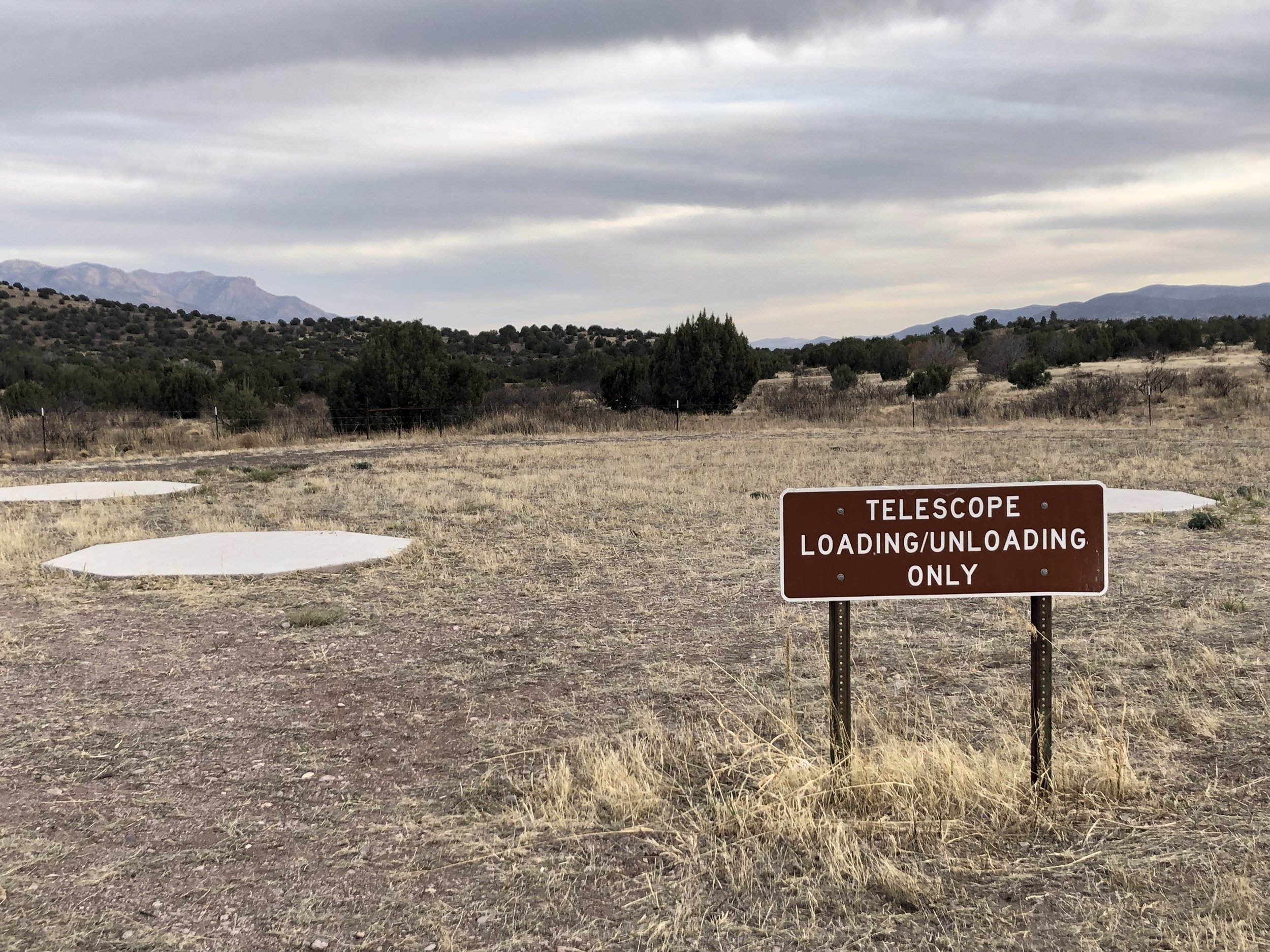Into New Mexico’s Gila National Forest
The road to the Gila National Forest has no shortage of fascinating stops. After spending snowy days in the mountain towns of Cloudcroft and Ruidoso, New Mexico and camping in the Apache and Cibola National Forests, we set off toward Gila.
We packed up camp early to find the first available cup of coffee. Magdalena, New Mexico was the nearest town on our route (Highway 60) where we pulled over at a discrete building bearing “espresso” and “open” signs. Turns out, this coffee shop was also a letterpress/creative studio, Es-Press-O, with a restored El Camino parked inside. It was once the local hardware store. This was the first of many surprising little joys.
Steaming americanos in hand, the next feature appears on the atlas and on road signs announcing the Very Large Array (or VLA, and that it has an abbreviation was enough to pique interest). The Very Large Array is a radio telescope observatory comprised of a series of giant radio receivers in rotating positions that capture faint cosmic radio waves across a large scale. This allows scientists to do specific astronomical research, including tracking stars and black holes and evidence of life in the universe. The dishes are 80’ across and placed strategically via rail on ranchland with pronghorn sheep and cattle grazing beneath. Unfortunately, the Visitor’s Center is closed when we visit due to COVID protocols. It would have been informative to watch the award-winning documentary film shown there, narrated by Jody Foster. Wild!
A single receiver - one part of the Very Large Array, Soccoro County, New Mexico
Another highlight – about 20 miles out of the way but worth it – is Pie Town, New Mexico. Pie Town is named as such as a result of early settlers who became known for their apple pies and as a stop for those passing through. The Pie-o-neer Café opens at 10am and serves meals in addition to pie. The traditional rustic apple pie was marvelous for breakfast, as was the apple and hatch chili pie, as was more coffee. The porch is inviting, and dogs are welcome outside. A delightful stop, Pie Town.
Pietown, New Mexico
The Pie-o-neer Cafe offers a specialty hatch chili apple pie.
Now fortified with pie, the drive to Gila National Forest offers big vistas. The Catwalk near the small town of Glenwood is a fun and immersive USFS trail site. The Catwalk is an extensive suspended walkway through an open canyon with whitewater below. The trail is an interesting and informative way to learn the geologic history of the area through interpretive panels along the way. And it is just neat to be walking in a canyon on an open grate attached to the rock wall.
From there, the ghost town of Mogollon is a nearby drive via a scenic and winding road. Mogollon was a transient mining town that still holds some relics and some restored buildings, like an inn (haunted), a café, and a museum. A ride through the small settlement gives the idea of what it once was and the mining work that went on there. Beyond the settlement, the road becomes an unpaved USFS road that leads to what sounds like a beautiful spot – Snow Lake - though it is closed for the winter season when we visit.
Mogollon, New Mexico
For this part of the journey, we land at the USFS Cosmic Campground. The Cosmic Campground made for a great landing spot, with a designated campground but also with dispersed sites. The area was beautiful with views of the sunset over the mountains. Most notably, the campground is the first sanctuary in North America designated by the International Dark Sky Association as an International Dark Sky Sanctuary. The Cosmic Campground is 3.5 acres in the Gila National Forest in a particularly dark part of the Lower 48. Wonderfully, there is a designated spot in the campground for visitors with telescopes, which a ranger told us gets busy on new moon nights for “star parties”. When there is a new moon (and even when there’s not), the night sky is magnificent. We enjoy our dispersed camping site so much that we return to camp here again in coming days. Visiting Gila’s Cliff Dwellings lies ahead.
Cosmic Campground International Dark Sky Sanctuary, New Mexico
Cosmic sunset at the Cosmic Campground, dispersed campsite






